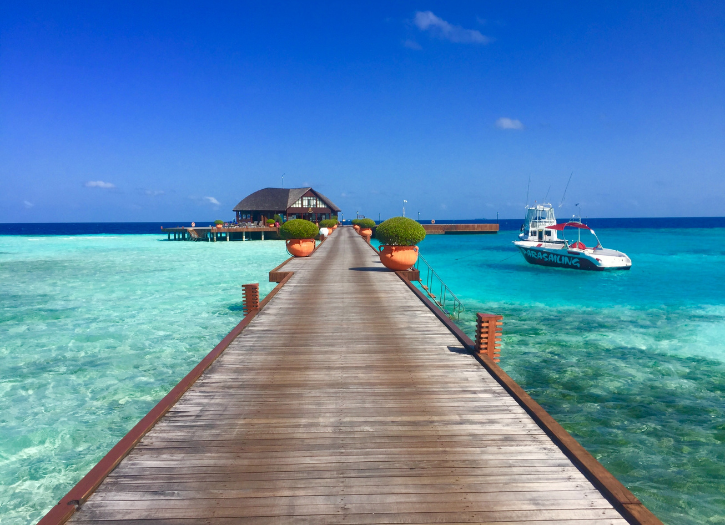Maldives is an archipelagic state located in South Asia, situated in the Indian Ocean. It lies southwest of Sri Lanka and India, about 750 kilometers (470 miles; 400 nautical miles) from the Asian continent’s mainland.
The other islands are used entirely for economic purposes, of which tourism and agriculture are the most dominant. Tourism accounts for 28% of the GDP and more than 60% of the Maldives’ foreign exchange receipts. Over 90% of government tax revenue comes from import duties and tourism-related taxes. The development of tourism fostered the overall growth of the country’s economy. It created direct and indirect employment and income generation opportunities in other related industries. The first tourist resorts were opened in 1972 with Bandos Island Resort and Kurumba Village (the current name is Kurumba Maldives), which transformed the Maldives economy.
According to the Ministry of Tourism, the emergence of tourism in 1972 transformed the economy, moving rapidly from dependence on fisheries to tourism. In just three and a half decades, the industry became the main source of income. Tourism was also the country’s biggest foreign currency earner and the single largest contributor to the GDP. As of 2008, 89 resorts in the Maldives offered over 17,000 beds and hosted over 600,000 tourists annually. In 2019, over 1.7 million visitors came to the islands. The number of resorts increased from 2 to 92 between 1972 and 2007. As of 2007, over 8,380,000 tourists had visited Maldives. The country has six heritage Maldivian coral mosques listed as UNESCO tentative sites.
Visitors
Visitors to the Maldives do not need to apply for a visa pre-arrival, regardless of their country of origin, provided they have a valid passport, proof of onward travel, and the money to be self-sufficient while in the country. Most visitors arrive at Velana International Airport, on Hulhulé Island, adjacent to the capital Malé. The airport is served by flights to and from India, Sri Lanka, Doha, Dubai, Abu Dhabi, Singapore, Istanbul, and major airports in South-East Asia, as well as charters from Europe. Gan Airport, on the southern atoll of Addu, also serves an international flight to Milan several times a week. British Airways offers direct flights to the Maldives from Heathrow Airport.
For many centuries the Maldivian economy was entirely dependent on fishing and other marine products. Fishing remains the main occupation of the people and the government gives priority to the fisheries sector. Manpower development programs began in the early 1980s, and fisheries education was incorporated into the school curriculum. Fish aggregating devices and navigational aids were located at various strategic points. Moreover, the opening up of the exclusive economic zone (EEZ) of the Maldives for fisheries has further enhanced the growth of the fisheries sector.
As of 2010, fisheries contributed over 15% of the country’s GDP and engaged about 30% of the country’s workforce. Fisheries were also the second-largest foreign exchange earner after tourism.








Add Comment